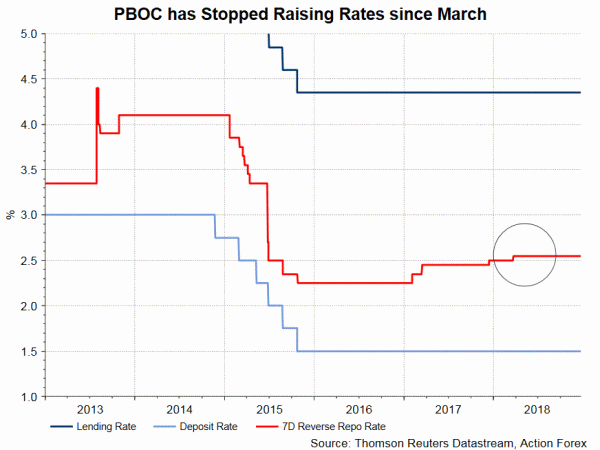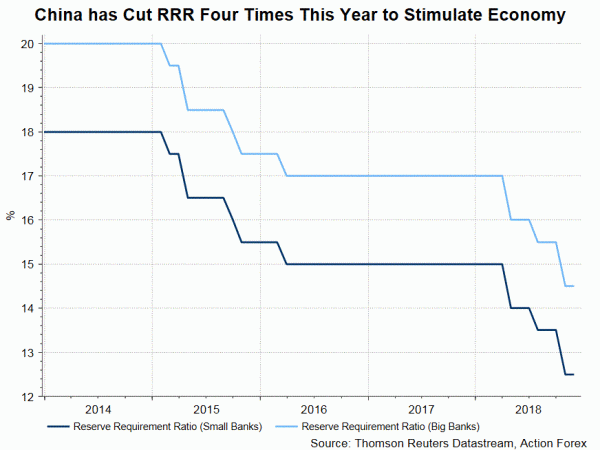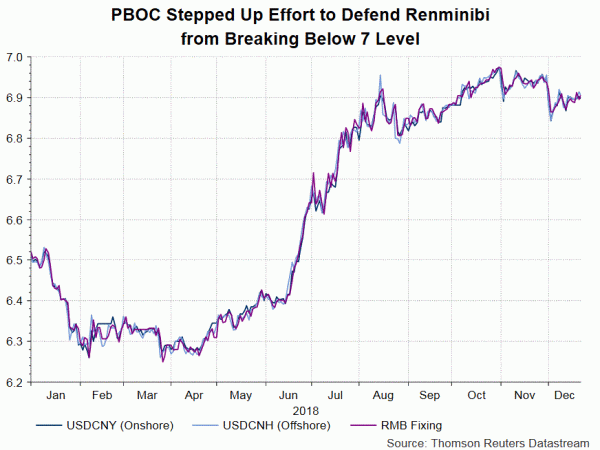Ongoing trade war with the US is accelerating the slowdown in growth in China. As such, the monetary policy adopted by PBOC would continue to be accommodative. Echoing the rhetoric of the annual Central Economic Work Conference, PBOC affirmed that its policy for the coming year would remain “prudent and neutral”. The term “prudent” has been used to describe its monetary policy since 2013, while “neutral” has been used since 2016. China’s monetary policy has undergone tightening and easing over the past few years. Simply repeating it as “prudent” and “neutral” is irresponsible and shows no intention to improve communication with the public.
Targeted Medium- Term Lending Facility (TMLF)
Judging from PBOC’s action, we understand that its policy has been increasingly accommodative. The central bank announced last week that it would launch a targeted medium-term lending facility (TMLF), in order to encourage banks to provide more loans to “small and micro enterprises and private businesses”. The TMLF funds will be available for 3 years with an operational interest rate of 3.15%, -15 bps lower than that of medium-term lending facility (MLF). Moreover, it would mature in a year, but could be rolled over twice, making the actual maturity as long as three years. This operation is applicable to “large commercial banks, joint-stock commercial banks and large city commercial banks” which comply with macro-prudential requirements. For small and medium-sized financial institutions, PBOC would increase quotas of its lending and the discount by another RMB 100B.
We expect the operation to offer limited help to the credit market. Apart from its temporary nature, the real reason for banks’ reluctance to lend to small and micro firms is “default risk”. The lack of confidence is a derivative of the growth slowdown of the broader economy. Injecting more liquidity to banks does not necessarily restore the confidence. PBOC has not disclose detailed operation of the TMLF. It might be of more help of the banks are allowed to use the fund to invest in corporate bonds issued by the small and micro firms
More Cuts in Reserve Requirement Ratio (RRR)
The last reduction, adopted in October, took the RRR for large and small banks to 14.5% to12.5%, respectively. For 2018, PBOC has cut the RRR by four times by a total of -250 bps. We expect more cuts in 2019 with the first move (by -100 bps) coming in as soon as January, ahead of Lunar New Year in early February so as to stimulate consumption.
Renminibi – Managed Depreciation
PBOC also noted that it would “enhance counter-cyclical adjustments, maintain reasonably adequate market liquidity and execute targeted adjustments in a more precise and effective way”. Unlike major central banks in advanced economies, the objective of PBOC is not to accomplish target inflation. Rather, it aims a stabilizing the exchange rate. When first introduced in mid 2017, the counter-cyclical factor is just another non-transparent tool adopted by the central bank to intervene the renminbi. The “factor” was suspended in January 2018 and then resumed use in August. Unlike what Trump believes, China does not only manipulate its currency so that it depreciates. Notwithstanding it mysterious nature, the counter-cyclical factor is believed to support the renminbi at times of weakness. Excessive depreciation of a currency would trigger a downward spiral of capital outflow.
PBOC’s indication that it would “enhance counter-cyclical adjustments” suggests that it sees further downside risks to the outlook of renminibi. We view this as a pledge to intervene the market so that the renminbi would not fall below a certain range. Back in October and November, USDCNY almost breached 7 for several times. A break above this psychological level in 2019 appears likely. In our opinion, PBOC’s intervention approach does not aim at a certain price level, but to ensure renminibi’s decline is gradual and within control.














